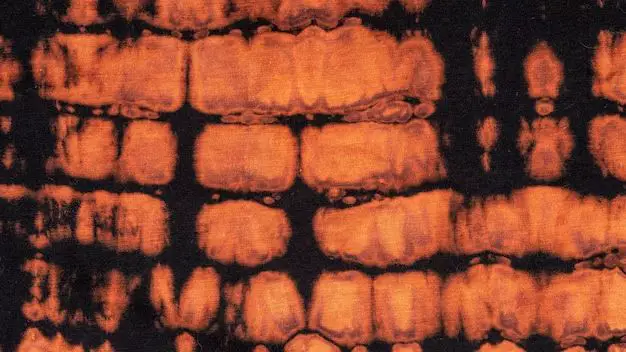Cigarette burns in clothing or other fabric can be frustrating, but there are ways to remove or minimize their appearance. With the right techniques and supplies, you can often eliminate or reduce cigarette burn holes and marks in fabric.
Page Contents
What causes cigarette burns in fabric?
Cigarette burns are caused by the hot ash and ember coming into contact with fabric. When a burning cigarette comes in contact with fabric, it essentially melts the fibers, creating a stiff, hardened area that looks like a hole or mark.
The severity of cigarette burn damage depends on:
- The temperature of the cigarette ember
- The length of contact with the fabric
- The type and weight of the fabric – lightweight fabrics like silk are more prone to damage
The good news is that because a cigarette burn mainly damages surface fibers, it can often be repaired with the right techniques.
How to get cigarette burns out of natural fabrics
For lightweight cotton, linen, wool and other natural fabric:
Method 1: Use an iron-on patch
Iron-on patches or mending tape provide an easy fix for cigarette burns by covering up the hole or mark. Look for patches made of a similar fabric type and weight as your garment or item. Avoid thicker patches on lightweight fabric, as they may be noticeable.
To use:
- Cut the patch slightly larger than the burn hole
- Place tape over the hole’s underside (inside the garment)
- Iron the patch to seal it on, following package directions
This method hides the hole well, though it may be felt on the inside of the garment.
Method 2: Use a needle and thread
For small cigarette burns, hand sewing with matching thread can neatly close the hole.
To hand-sew a hole closed:
- Thread a needle with thread that matches the fabric color
- Secure the thread with a knot and stitch across the hole in an X shape
- Go around the hole 3-4 times, pulling gently to close the hole without bunching fabric
- Secure with another knot and clip thread ends
Hand-sewing pulls the fibers closed for an almost invisible repair. It works best on smaller holes in lightweight cottons and linens.
Method 3: Use a fabric filler and touch-up kit
For larger holes or severe burn marks, a fabric filler fills in gaps and a touch-up kit covers up discoloration.
To use:
- Apply small amounts of filler compound to fill the hole, smoothing with a plastic spatula
- Allow filler to fully dry as directed, often 24 hours
- Lightly sand any bumps smooth
- Use touch-up kit to apply fabric dye and match the color of the surrounding fabric
This fills in the missing fabric and helps disguise discoloration or stiffening around the edges of the burn.
How to get cigarette burns out of synthetic fabrics
Manmade fibers like polyester, nylon, and acrylic have a lower melting point than natural fabrics. This can make cigarette burns in synthetic fabrics even trickier to repair.
Method 1: Use a specialty hole repair kit
Hole repair kits designed for synthetic fabrics include compound formulas that bind to smooth, melted fibers better than regular filler. The compound fills in gaps and allows redyeing to match the surrounding fabric.
Follow kit directions to fill holes and touch up discoloration. Sand lightly between steps if needed.
Method 2: Replace a section with a patch
Cutting out the damaged area and replacing it with a fabric patch is an option if the hole is large or you have leftover matching fabric. This works best for items like polyester coats.
To patch:
- Cut out the damaged area, leaving clean edges
- Cut a patch piece the same shape from matching fabric
- Sew, glue, or fuse the patch into place
Try to match patterns and fabric direction so the patch blends in.
Method 3: Use an iron-on patch
Iron-on patches work well for quick fixes and small holes in synthetics. See the steps above for using iron-on patches. Choose a patch made of similar synthetic fabric.
Tips for removing cigarette burns from fabric
Some additional tips for minimizing the appearance of cigarette holes and burns:
- Act quickly for easier repair – lingering heat can spread damage
- Avoid applying glue directly inside clothing, as it can irritate skin
- Use thin filler layers for a smoother finish on light fabrics
- Test dye colors on a hem or inner seam to match surrounding fabric
- Consider removing stubborn scorch marks around holes with bleach (test first)
What if the burn hole is too big to repair?
If a cigarette burn has left a hole too large to fill in or replace with a patch, consider these options:
- Sew decorative patches or embroidery over top to disguise it
- For items like blankets or quilts, cut away the damaged section and repiece the fabric
- Cut damaged clothing into a smaller piece, like turning pants into shorts
If the damage is beyond repair, at least recycling or repurposing the item is better than throwing it out!
How to prevent cigarette burns in fabrics
Avoiding cigarette burns in the first place is easiest:
- Never smoke indoors, especially on furniture, carpets or bedding
- Smoke outdoors and extinguish butts completely in an ashtray before going inside
- Check clothing for any embers before going indoors after a smoke break
- Keep combustibles away from outdoor smoking areas
- Use deep, sturdy ashtrays
Be cautious around fabrics when smoking to prevent burns and holes from happening.
Conclusion
Repairing cigarette burn holes and marks in fabric takes patience but is often possible. Hand-sewing, patches, fillers and dyes can restore most lightweight natural fabrics. Synthetics may require specialty patching and filling products. Preventing the burns in the first place by smoking carefully is always the best approach for keeping fabrics looking their best.
